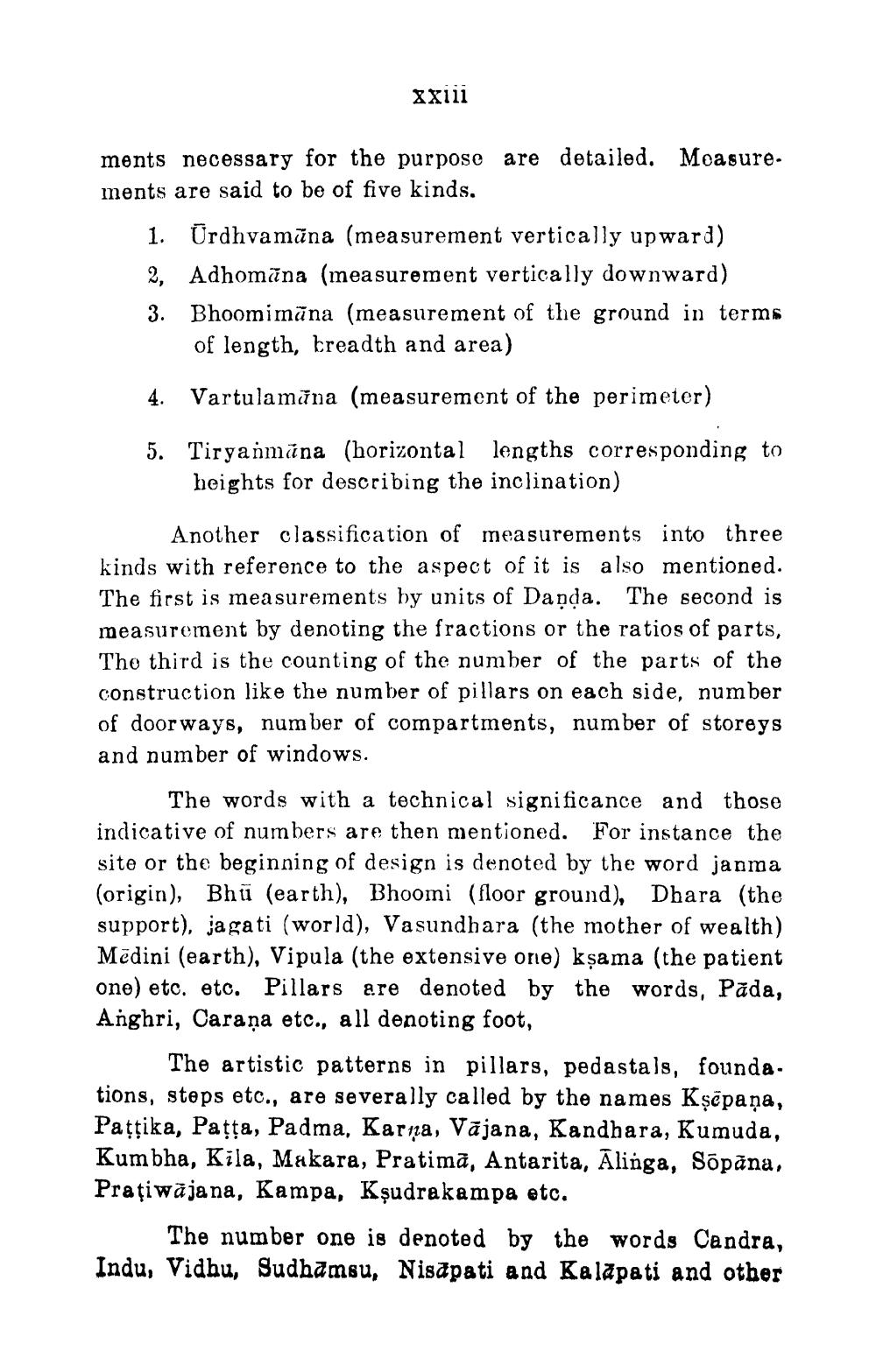________________
Xxiii
ments necessary for the purpose are detailed. Measurements are said to be of five kinds.
2,
1. Urdhvamuna (measurement vertically upward) Adhomāna (measurement vertically downward) Bhoomimana (measurement of the ground in terms of length, breadth and area)
3.
4. Vartulamāna (measurement of the perimeter)
5. Tiryanmana (horizontal lengths corresponding to heights for describing the inclination)
Another classification of measurements into three kinds with reference to the aspect of it is also mentioned. The first is measurements by units of Danda. The second is measurement by denoting the fractions or the ratios of parts, The third is the counting of the number of the parts of the construction like the number of pillars on each side, number of doorways, number of compartments, number of storeys and number of windows.
The words with a technical significance and those indicative of numbers are then mentioned. For instance the site or the beginning of design is denoted by the word janma (origin), Bhu (earth), Bhoomi (floor ground), Dhara (the support), jagati (world), Vasundhara (the mother of wealth) Medini (earth), Vipula (the extensive one) kşama (the patient one) etc. etc. Pillars are denoted by the words, Pada, Anghri, Carana etc., all denoting foot,
The artistic patterns in pillars, pedastals, founda. tions, steps etc., are severally called by the names Kṣepaņa, Pattika, Patta, Padma, Karna, Vajana, Kandhara, Kumuda, Kumbha, Kila, Makara, Pratima, Antarita, Alinga, Sōpana, Pratiwajana, Kampa, Kşudrakampa etc.
The number one is denoted by the words Candra, Indu, Vidhu, Sudhamsu, Nisapati and Kalapati and other




